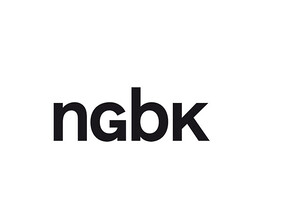March 19–April 30, 2016
1st floor, entrance via escalator
Karl-Liebknecht-Strasse 11/13
10178 Berlin
Germany
presse@ngbk.de
Naama Arad, Timothy Archer, Sean Crossley, Sergio Cusmir, Rotimi Fani-Kayode, Heike-Karin Föll, Juliana Huxtable, Lukas-Julius Keijser, Aleksandra Mir, Michaela Meise, Konrad Mühe, Mysti, Egle Otto, Antje Prust, Przemek Pyszczek, Ronald M. Schernikau, Bodo Schlack, Sarah Ancelle Schönfeld/Oskar Curter, Timo Seber, Lea St. and Danh Vo
With performances, lectures, analyses, salons and liberation rituals by Lothar Baumgarten, Arielle Bier/Magnus Rosengarten, Lily Benson/Cassandra Guan, Sabeth Buchmann/Helmut Draxler/Susanne Leeb, Sadie Lune/KAy Garnellen/Mad Kate, Aykan Safoğlu, Ronald M. Schernikau/Ellen Schernikau, Vanessa Sinclair and Melanie Jame Wolf
The international group exhibition brings together works of art challenging both the traditional father figure and the patriarchal canon of art history. The curators of Father Figures Are Hard To Find start from the assumption that only a precious few develop themselves in the absence of authority or role models, relying exclusively on their own piecemeal subjectivity. In the exhibition space, new perspectives are to be opened—outside of the family as a reproductive union and at a distance to fatherhood as the exclusive reserve of heterosexual men. Instead, father figures are presented who offer us their elective affinities in symbolic and fluid ways.
The works of art offer new role models and touch upon the desire to admire and revere, while simultaneously allowing us to cast them away altogether. What can a father figure be? What will become of our fathers, of the “Our Father,” of the Fatherland? What personae in the history of art have been underestimated as possible mentors on account of not being white, male, and/or straight? How can the building blocks that make a father figure be cleaved from the body of the biological progenitor? And what disembodied, digital, and affirmative genealogies can emerge from this?
Naama Arad’s installation Har Hazofim (2010) cites a modernistic view out of a window from a Hitchcock film. The gaze is filtered by a peach-coloured silk curtain. The architectural landscape with pasted-on Xerox copies depicts the paternalistic heads of the presidents on Mount Rushmore. The title of the work refers to the eponymous mountain that, as an enclave of East Jerusalem, accommodates the Bezalel Art academy founded in 1906.
Rotimi Fani-Kayode’s photographs engage with the ritualistic and pictorial traditions of the Nigerian diaspora, although his homoerotic pictures are deliberately non-traditionalist and unauthentic. They stem from the contemporary debates on Body Art and the staged photography of the 1980s. The sexualized appropriation of Yoruba motifs simultaneously calls to mind the fetishisation of Nigerian masks by the canonized fathers of modern art, who at the beginning of the 20th century used their own primitivistic projections onto looted African art as a source of inspiration.
The lecture performance DADA DADDY HASSELHOFF by Mysti combines a critique of psychoanalysis and identitarian self-discovery attempts with Dadaistic poetry. The flexibility of the father figure is illustrated with reference to a curious male idol of the Germans: David Hasselhoff. (Mysti, DADA DADDY HASSELHOFF, March 27, 7pm, in English)
Egle Otto’s painting Botticelli, Giotto, Grünewald, da Vinci, Mantegna, Rosetti, Ensor, Parmigianino, Lippi, Raffael, van der Weyden, Ingres, Ernst (2012) is at once an homage to and an appropriation of painter models. The front side of the canvas depicts halos that the artist adopted from her male predecessors and then completed. Otto deals with the authenticity, authorship, and artistic egos of those cited by—in a literal copy of their handwriting—placing all 12 signatures of the painters on the back side.
Project group / curatorial team: Alicia Agustín, Raoul Klooker, Markues, Tucké Royale, and Vince Tillotson


